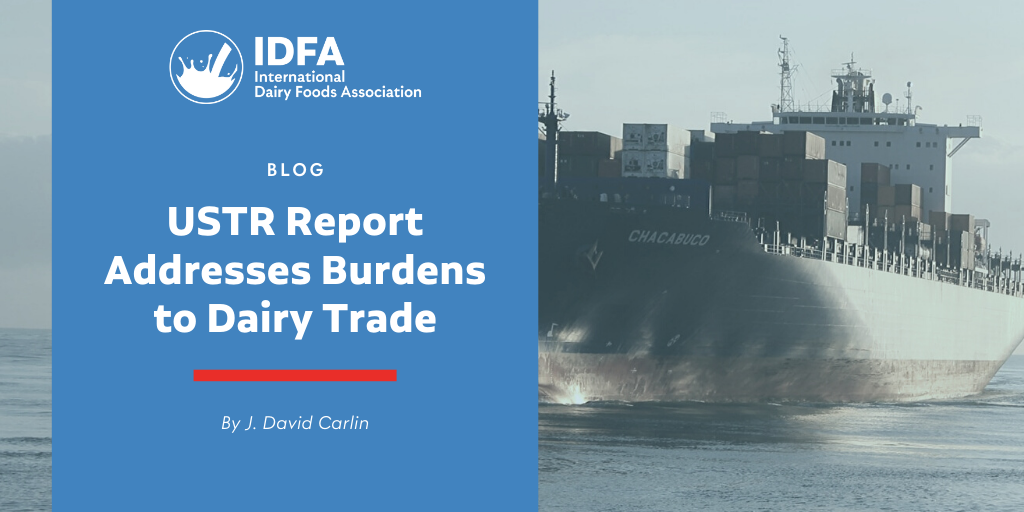The Office of the U.S. Trade Representative (USTR) last week issued its annual National Trade Estimate Report, outlining many tariff and non-tariff barriers, including protective measures and technical obstacles to trade, that U.S. dairy companies face around the world. Published annually, the 540-page report highlights significant foreign barriers to U.S. exports, U.S. foreign direct investment and U.S. electronic commerce.
In October, IDFA submitted comments to USTR highlighting trade impediments the U.S. dairy industry faces specifically in Canada, China, the European Union, Japan, India, Russia and the United Kingdom. Several of these issues highlighted in IDFA’s comments were captured in the report as detailed below.
Canada
Canada’s section of the report outlines many of the burdens to U.S. dairy trade. The biggest barrier is Canada’s highly restricted dairy market due to its supply management system that controls price, marketing, and production using a highly limited tariff-rate quota (TRQ) program.
The report also explains that Canada’s milk class system prevents Canada from being a price competitive player in the world dairy market. Since Canada allows for very low pricing of domestically made Class 6 and 7 milk, and the TRQ system imposes high tariffs for imports, it is very difficult for the U.S. to maintain meaningful market access in Canada.
It is hoped that through the cooperation of the U.S.-Canada-Mexico agreement, once implemented, these barriers will be heavily reduced over time.
China
Regarding dairy, the report highlighted China’s imposition of retaliatory tariffs following U.S. action under Section 301. Essentially all U.S. dairy imports are now subject to additional tariffs ranging from 10 percent to 25 percent.
Additionally, the report mentioned China’s ongoing implementation of its 2015 Food Safety Law, which includes registration requirements for exporter facilities and products such as dairy and infant formula. This process is burdensome and time-consuming for U.S. dairy exporters.
European Union
The report discusses intellectual property, specifically geographical indications (GIs), in great depth as a trade barrier for the United States. According to the report, the EU system allows for over protection of GIs, which threatens the protection of U.S. trademarks and the ability to use common names for products.
India
Noted in the report are the strict requirements that India imposes on U.S. dairy imports. Due to religious and cultural norms in India, all dairy imports must be derived from animals that have never consumed feeds that contain animal byproducts. Although India is considered one of the largest dairy markets in the world, the feed requirements, along with very high import tariffs, prevent the U.S. from market access.
Russia
According to the report, the U.S. dairy industry is nearly banned from importing into Russia due to a requirement that maintains that all imported dairy products must come from Customs Union-approved facilities. Russia agreed to remove this requirement in 2012 because of orders from WTO but has yet to do so.
IDFA Subject Matter Expert

J. David Carlin
Senior Vice President of Legislative Affairs and Economic Policy

